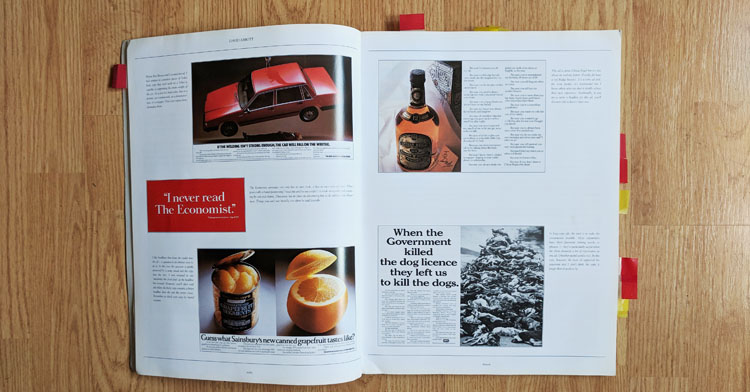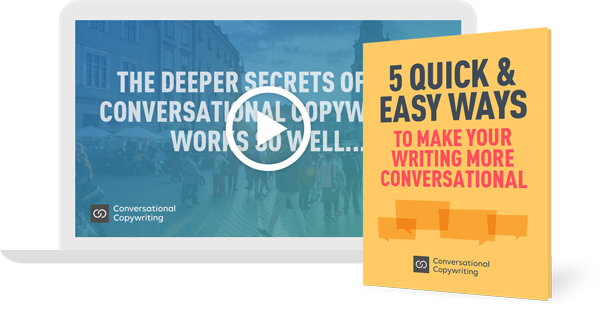
I fell in love with the craft of copywriting on the very first day.
This was in the early 1980s, when I had just started work at a small ad agency in London.
My idea of a fun evening was to stay up late, studying the work of the copywriters I admired most.
I’d read their ads out loud, and write then down in longhand… pen on paper.
The process helped me feel the rhythm and flow of their writing, and taught me a lot.
A couple of my favorite copywriters back then were David Abbott and Susie Henry. They wrote wonderful print ads. Beautiful writing.
I was a huge fan of that quality of writing. It inspired me to try reaching for the same heights, or as close as I could manage.
Back in those early days, most of my writing was for print ads.
Then I began to write direct mail, and did my best to apply the same discipline to writing sales letters.
And then along came the web…
I love writing for the web, and always have. I wrote my first website back in 1995!
But it’s very different.
Writing a website isn’t like writing an old-school print ad. Nor is writing e-newsletters or social media updates.
As for sales pages online… I find most of them to be either too flat and descriptive, or overly pushy and promotional.
As a lifelong student and fan of the craft of copywriting, I ask myself… where has the great copywriting gone?
Of course, the answer to that question depends on your definition of great copy.
For me, that definition will always have me circling back to those days in London, watching the likes of David Abbott and Susie Henry ply their craft.
Incredible writing. Deeply engaging. Powerfully persuasive.
But never blunt, salesy or overly promotional.
Hence my love affair with conversational copywriting.
When I teach conversational copywriting, I’m blending my love for the craft of copywriting with my fascination with the web.
And I’m not alone.
Another of my copywriting heroes from those early years is Drayton Bird.
And he’s still going strong… online.
Sign up for his newsletter, just for the opportunity to read the text of the emails he sends you. He’s an outstanding copywriter.
Drayton was kind enough to write a guest post for this blog a while back.
Here’s an excerpt from what he wrote:
Is your writing conversational?
Or is it full of stuffy corporate jargon?
Formal and pretentious, striving to be literary?
Does it get people to act – or bore them to tears?
If your copy is like that – if it isn’t conversational – it won’t be read. And it won’t sell.
The best copy has always been conversational…
Drayton wasn’t just talking as a web writer.
When he asked the question – “Is your writing conversational?” – he could and would have asked that same question of print copywriters back in the 1980s. David Abbott and Susie Henry would have asked the same question, because their own copy was most definitely conversational.
Use Google to find some of David Abbott’s work for Chivas Regal, Volkswagen or Volvo. Look up Susie Henry’s work for Commercial Union.
Read the text of their ads out loud, like I was doing almost 40 years ago.
Feel how naturally their copy flows, as if they were talking to a friend across their kitchen table.
My point is… the very best copywriting has always been conversational.
Legendary copywriters from half a lifetime ago made that conversational approach work on old-school, one-way media, like newspapers and magazine.
Surely we can do the same on the web… which by its very nature is social and conversational.
Or at least we can try.
And fall in love again with the craft of great copywriting.
NOTE: If the idea of writing powerful, conversational copy appeals to you, find out more about my course on Conversational Copywriting…
